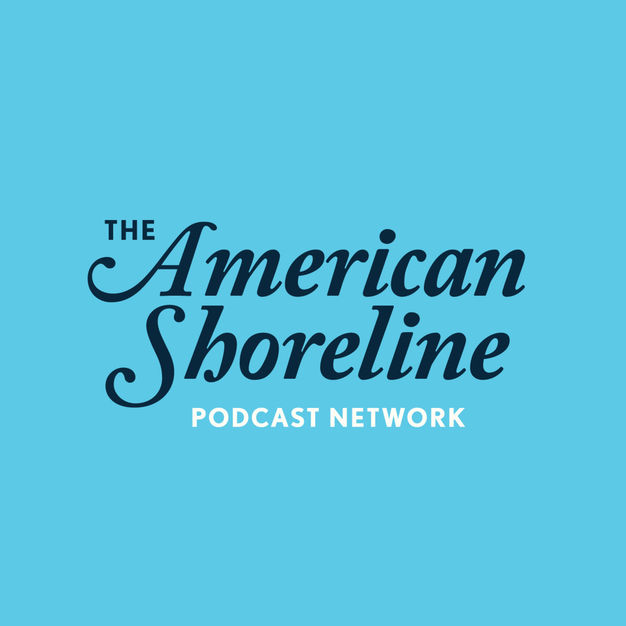
American Shoreline Podcast Network
Coastal News Today
ASPN, a service of Coastal News Today, is the platform for top minds in coastal business, policy, science, and advocacy. With ASPN, you'll be better prepared, better informed, and better equipped to thrive, no matter what you do on the coast. See the complete coastal landscape with ASPN and CNT and gain insight into the critical issues affecting the American shoreline.
- 44 minutes 31 secondsMeet Ido Sella: The Ecological Engineer Revolutionizing Coastal Infrastructure | Wave Makers
In this final episode of Wave Makers Tamara Kahn announces her transition to fulltime with Seaworthy Collective where she directs the Startup Studio and Incubator program, applications now open! She also celebrates another innovator working at the intersection of technology, regeneration, and ocean conservation. Tune in to hear how Dr. Ido Sella and a fellow Marine biologist, Dr. Shimrit Perkol-Finkel (1975-2021), asked the right questions and founded ECOncrete. Ido shares about the happy accident that led them to start this company and the relationships they’ve built to enable scaling of their solution. Plus, listeners can get informed on real-world applications and success stories of the ECOncrete team shaping and conserving areas where our human built environment meets the sea.
3 January 2024, 3:35 pm - 1 hour 8 minutesUnder Ice Technology and the Blue Economy in the Great Lakes | American Blue Economy Podcast
In our final episode of the American Blue Economy Podcast, our host Rear Admiral, Tim Gallaudet, PhD, US Navy (ret) meets with his former NOAA colleagues in the Great Lakes to explore under-ice technology and how ecological and oil spill monitoring are important tools for the Blue Economy in the region. Joining him are Steve Ruberg, a research physical scientist focusing on winter AUV technology at NOAA’s GreatLakes Environmental Research Lab (GLERL), Dr. Ashley Elgin, a research benthic ecologist also at GLERL, David Ruck, a documentary filmmaker formerly with NOAA and founder of Great Lakes Outreach Media. Together, they discuss how winter time monitoring is an important but difficult component of GLERL's long-time monitoring of the Great Lakes supporting recreation, fisheries, water quality, and more. Many thanks to our loyal listeners, and we wish you happy holidays, fair winds, and following seas in the years to come!
26 December 2023, 11:27 pm - 1 hour 2 minutesThe Real History Behind Reversing the Chicago River | North Coast Chronicles
The Real History Behind Reversing the Chicago River with Mr. Dick Lanyan, who spent 48 years with the Metropolitan Water Reclamation District of Greater Chicago, where he became the executive director and ran the day-to-day operations - which addresses the industrial waste load equivalent for 9 million people. Very early in our American history, the potential for Chicago to be the center of an expansive water system, connecting the East and the West with its location on Lake Michigan and along the Chicago River, prompted the federal government to establish Fort Dearborn in 1803 where Chicago now sits. There is no shortage of written and digital stories about the Chicago River and how it was reversed almost 124 years ago on January 1, 1900. It is referred to as an engineering marvel – and certainly – it took engineering know-how and back breaking work to create this “Big Ditch.” But, the story of Chicago’s challenges as a booming metropolis started way before the re-direction of the Chicago River and has everything to do with its location on the southwestern shore of Lake Michigan and the great Chicago population boom. Further, Chicago's days of flooding are far from over related to climate change and its continued large population.
22 December 2023, 4:32 pm - 30 minutes 40 secondsA Sea of Poetry: A Winter Solstice Special with Portland Poets Society | Sea Change
Tune into this special episode of the Sea Change Podcast to celebrate the winter solstice with Jenna, Portland Poets Society, and a sea of poetry! A special thanks to the contributors from the Portland Poets Society community and beyond for sharing their wisdom and art with us.
20 December 2023, 3:46 pm - 55 minutes 51 secondsHoliday Traditions on the Waves: The Legacy of Chicago's Christmas Tree Ship | North Coast Chronicles
Dive into the remarkable tale of the Rouse Simmons, known as Chicago's original "Christmas Tree Ship," and explore how this early 1900s tradition continues to captivate hearts today. Join Dr. Theodore Karamanski and CAPT Scott Smith (USCG, ret) as they unravel the history of a trade where, as Dr. Karamanski puts it, "Sailing the lakes in November and December was literally participating in a lottery of death. But the profits could be considerable...” Uncover the legacy of a daring maritime tradition that brought holiday cheer and its enduring spirit in modern times, in this special holiday episode of North Coast Chronicles.
18 December 2023, 2:00 am - 5 minutes 6 secondsMarine Biomimetics, part two | World Ocean Radio
In these three episodes of World Ocean Radio we are exploring a recent publication entitled “A Forgotten Element in the Blue Economy: Marine Biomimetics and Inspiration from the Deep Sea,” authored by Robert Blasiak from the Stockholm Resilience Center in Sweden. The article identifies seven broad categories of biomimetic design: adhesion, anti-fouling, armor, buoyancy, movement, sensory, and stealth. In this 3-part series we'll discuss each with examples of application, technological invention, and as effective solution models for response to negative human intervention and climate change, and for ocean protection and conservation.
16 December 2023, 2:00 pm - 53 minutes 18 secondsShedding light on Bioluminescence | Shorewords!
Enjoy the Shorewords! podcast with Dr. Edith (Eddie) WIdder, author of Below the Edge of Darkness, marine biologist, and co-founder of Ocean Research & Conservation Association (ORCA, www.teamorca.org). Eddie has spent years studying bioluminescence, which is light produced by living organism, and since most bioluminescent organisms are in the ocean, she has spent hundreds of hours in submersibles hoping to see flashes of light. Her podcast covers stories of her time under water and provides clear explanations of the current science on the hows and whys so many mid- and deep-ocean creatures blink and glow.
15 December 2023, 2:00 am - 53 minutes 31 secondsCoastal Reflections: A Look Back at 2023 and Forward to 2024 | Going CoastalIn this wrap-up episode, the Going Coastal team – Jon, Marissa, and Deb – take a look back at 2023, reminiscing about the year's most impactful coastal topics and their favorite moments. They explore the potential of living shorelines as the future of coastal defense, focusing on natural and nature-based features and stressing the importance of accessible, shared scientific data for enhancing coastline resilience. As they give a sneak peek into what 2024 holds, including exciting topics and special guests, listeners are invited to join in for both a reflective journey and a glimpse into an exhilarating future for coastal science and engineering.13 December 2023, 1:45 am
- 53 minutes 45 secondsMud Matters: Tracing the Carbon Carriers of the Ocean Floor
In this episode of the American Shoreline Podcast, hosts Peter Ravella and Tyler Buckingham engage with NOAA scientists Doug George and Sara Hutto in a discussion about their groundbreaking research on carbon hotspots along Northern California's coast. The conversation delves into the significant discovery of carbon reserves on the seafloor, highlighting the role of marine sanctuaries in climate change mitigation and the importance of preserving these natural carbon sinks. The experts shed light on the relationship between ocean sediments and carbon sequestration, offering a novel perspective on the ocean's potential in addressing global warming. Tune in to explore how this discovery could reshape our approach to environmental conservation and climate policy.
11 December 2023, 2:00 am - 5 minutes 4 secondsMarine Biomimetics: Part One | World Ocean Radio
Over the next few editions of World Ocean Radio we will be discussing a recent publication entitled “A Forgotten Element in the Blue Economy: Marine Biomimetics and Inspiration from the Deep Sea,” authored by Robert Blasiak from the Stockholm Resilience Center in Sweden. The article identifies seven broad categories of biomimetic design: adhesion, anti-fouling, armor, buoyancy, movement, sensory, and stealth. In this 3-part series we'll discuss each with examples of application, technological invention, and as effective solution models for response to negative human intervention and climate change, and for ocean protection and conservation.
9 December 2023, 2:00 pm - 50 minutes 57 secondsCasey Darling Kniffin: Ocean Advocacy in the Sunshine State | Sea Change
This episode features a prime example of the power of relationship-building and community-building in the world of ocean advocacy. Jenna and her guest, Casey Darling Kniffin, originally crossed paths during one of Healthy Ocean Coalition(HOC)'s Healthy Ocean Advocacy Academies. Following the Academy, Casey became an active and valued member of the HOC community, stepped into an ocean advocacy leadership role as Florida Oceanographic Society's Advocacy Coordinator, and now, as announced on the show, Conservation Policy Director for Florida Wildlife Federation. Casey is a driven changemaker whose leadership is very much needed in the conservation space. She's a true partner and visionary in this work, and Jenna is honored to call her a friend - and feature her story on this month's episode.
8 December 2023, 1:59 am - More Episodes? Get the App
- https://anchor.fm/aspn
- en-us
Your feedback is valuable to us. Should you encounter any bugs, glitches, lack of functionality or other problems, please email us on [email protected] or join Moon.FM Telegram Group where you can talk directly to the dev team who are happy to answer any queries.
 Code Switch
Code Switch
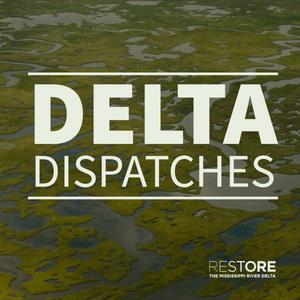 Delta Dispatches
Delta Dispatches
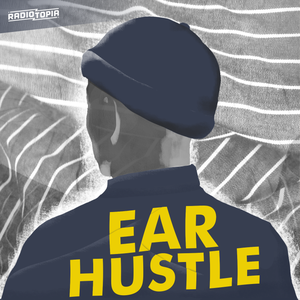 Ear Hustle
Ear Hustle
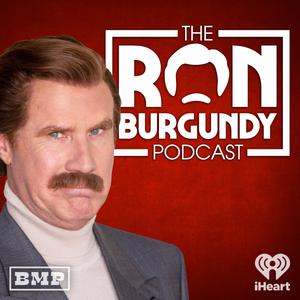 The Ron Burgundy Podcast
The Ron Burgundy Podcast
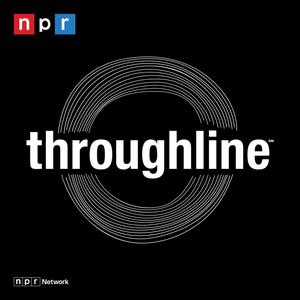 Throughline
Throughline
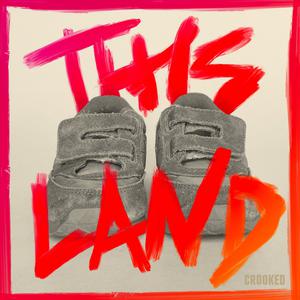 This Land
This Land